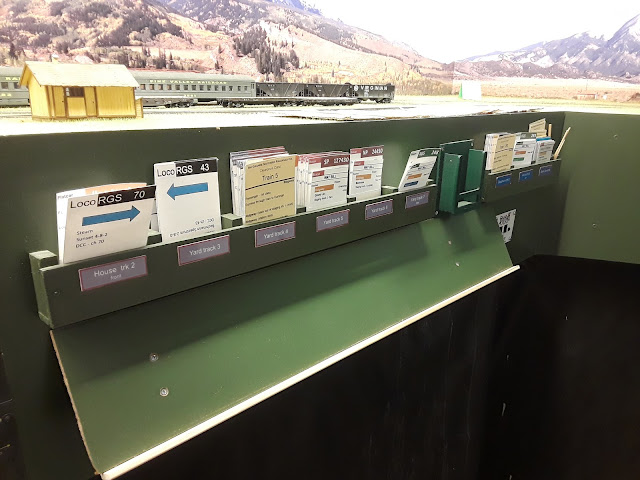My philosphy on these is to reveal the detail, as seen under layout lighting, and give the viewer a sense of the complexity and realism of the model. Somewhat ironically, doing this means I am usually NOT copying the prototype coloring and patterns exactly, but rather working to convey a result that viewer will sense as real.
So, what's all that mean? I have subtly highlighted most of the piping, in a color just a little lighter than the final weathered gray. Of course railroads didn't paint the piping like this, but I feel when done right, that the viewer will 'see' the piping detail and not really think about the fact it's not actually the same color as the rest of the loco. I do this with paint and a fine brush.
For example:
I start with a solid coating of Dullcote, to dull down the plastic and give some texture for the Pan Pastels to adhere to. I used to finish with another coating of Dullcote to seal things, but this removes most of the color. So, I've just left it. Hopefully, these locos aren't being handled very often. And if the weathering comes off - well, it's just a few minutes work with the powders to put it back on.
And - they all have actual coal from the RGS in their tenders! I know, I'm a geek... :-) Mike Conder sells sized, sorted RGS coal, if you're interested. See my RGS Model Kits page for details.
Here's the rest of the locos updated recently (all of these photos were taken on the Rico townsite, on my layout):
I also built some additional shelving, to support operators who are handling car-cards during operating sessions. I've been to a number of other layouts in the area, which use car cards, and have come to appreciate how handy it is to have some places (besides on the layout!) to see and sort the cards. I also have boxes built into the fascia, one per track, at all the siding locations.
A key item for me was designing shelving so you could spread out a train's worth of cards for sorting, but also to avoid cluttering up the aisles. So here's what I created:
So, here's the boxes and shelving for Durango, one of the two main yards on the layout. There are boxes for card storage (for yard tracks, and others), and a flat shelf for your coffee, soda, or munchies.
Here's the sorting shelf for Rico, a little ways down and across the aisle from Durango. Card boxes for Rico are (mostly) off to the right, but I moved the shelf here to encourage operators to avoid stand back-to-back in this aisle.
And here's the card boxes at the other end of Rico.
This is Ridgway, the other main yard on the layout. Off to the left is the flat shelf for previously-mentioned liquid consumables, and some of the card boxes.
And here's the right side of Ridgway, with more boxes and the sorting shelf. During construction work, you can see the boxes are stuffed with cards - simply to get them out of the way for now.
And notice those locomotive cards, with the big arrows? Those are especially helpful when a train (including a locomotive) is in a hidden staging track. The cards can be flipped vertically, and thus indicate which direction on the throttle you should choose, and which loco to address, to move the train out of staging.
This is Dolores - card boxes, munchies / coffee shelf, and sorting shelf:
There's also a few more boxes at the left side of the town, as there are more sidings here, and also a pair of hidden staging tracks representing the branch to the lumber town of McPhee.
Telluride was a little more challenging, space-wise - the operating position here is in a very narrow aisle (the high-line to Ophir is opposite, off to the right in this photo). The benchwork here is pretty high (Telluride is at 56", and reached by short, but steep 4% climb out of Vance Junction).
My solution was to build the sorting shelf completely under the benchwork, taking no space from the aisle at all. It's in the shadows a bit, so I added a short length of LED strip lights. So - again, card boxes on the fascia, and sorting shelf and flat munchies shelf tucked below:
Another view, giving an idea of how narrow the aisle is here. I think it's about 30". Beyond lies Vance Junction, and the aisle there swells out to 60", effectively creating a people turn-around spot down at the end. The 4% grade down to Vance Jct begins here those stock cars, and twists through and around the high rockwork. The height of those rocks is a visual trick, which hides the climb partially and greatly extends the apparent length of the branch.
And all the way down at the end of the aisle is Vance junction, and here there's only a little shelf for your coffee, and a couple of card boxes. There's a passing siding, short spur, and the wye at this location. The branch from Telluride is twisting through a canyon on the other side of the deep fascia on the right.






















